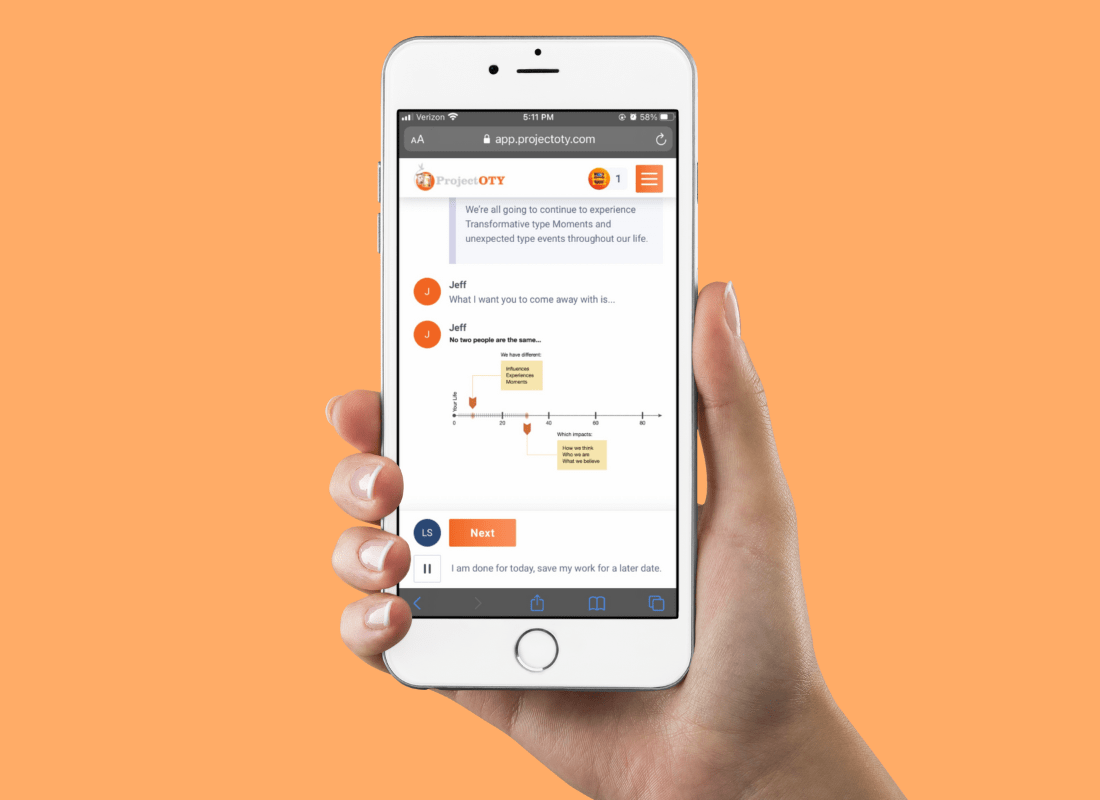Are you feeling the crushing weight of work and life on your shoulders?
Are you easily irritated?
Do you find it hard to focus at work?
Or…maybe your mind is spinning with the decisions you have to make and the tasks you have to do. (If it were possible, smoke would be jetting out of your ears.)
On top of that, you have this sense of soul-crushing tiredness where each day feels like a long journey with no end. Then you finally lay down to sleep at night, only to lie awake with anxious thoughts endlessly circling in your brain.

This is what burnout feels like. If these feelings are familiar, you could be experiencing them yourself. Know that you’re not alone, especially in recent years. Online searches for ‘signs of burnout’ showed a 24% increase throughout 2020 compared to the previous year.
Burnout, especially in the workplace, is becoming more common. Approximately two-thirds of full-time employees report experiencing burnout during their careers. Additionally, women are more likely to experience burnout with 32% reporting they were consistently burned out in the workplace, while 28% of men reported feeling burned out.
What Is Burnout – And How Do I Know If I Have It?
According to the World Health Organization, burnout is linked to the workplace. They define burnout as“…a syndrome conceptualized as resulting from chronic workplace stress that has not been successfully managed.”
They go on to note that there are three dimensions to burnout:
-feeling exhausted or lacking energy
-feeling mentally distanced or having negative feelings toward your job
-reduced ability to perform and succeed at your job
Beyond these dimensions, there are multiple stages of burnout. Understanding where you fall in these stages (if you find yourself relating to the above) can better help you recover and care for yourself while avoiding additional issues from letting things run unchecked.
So, what are the stages of burnout? Read on to find out what stage you’re in and the common symptoms of burnout.
Plus, for each stage, we share what you can do to combat burnout.
What Are the Stages of Burnout?
There are 5 stages of burnout. When it comes to these stages, think of treating burnout like a cold or disease. The earlier you “catch it”, the easier it is to combat it and “heal”.
And you might be wondering, “If I’m in one of the later stages of burnout, can I still come out of it okay?” The answer is “yes”. Understand that it’s never too late to work on overcoming burnout.
Stage 1: The Honeymoon Phase
This first phase of burnout happens right when you start a new job, project, or task. Like a relationship in its early stages, you feel happy. You’re on cloud nine. You’re 100% invested in the work you’re doing.
The positive feelings on the surface tend to mask the negative impact of taking on extra hours and additional tasks or special projects in the process. The stress is there, but you don’t feel it yet. The positive feelings keep you going until this first phase ends.
At this stage, setting boundaries is key. While a new project is exciting, you don’t want to burn yourself out from taking on more than you can handle in the long term. When it comes to your work, for example, is there a place where another person can lean in and help? Can you work with your boss or teammates to determine priorities?
Beyond that, can you create more structure around your day? What does your ideal routine look like to get things done?
Are there time management strategies you can implement?
Having a daily routine that combines what you need to do (that sense of discipline) with the daily activities you love to do or that help you decompress, will help at this stage.
Stage 2: Onset of Stress
This stage is where the burnout symptoms start to set in. While you may not have felt the impact of taking on the additional workload before, it starts to show in the way your body feels, the way you think, and the way you carry yourself day-to-day.
The risk of burnout is becoming more real. Your stress levels are rising. It feels like your energy is being sucked away from you. Meanwhile, your immune system is taking a hit. You find yourself needing to take a couple of extra sick days as your body tries to compensate.
You start to feel some of the following symptoms:
- Headaches
- Decreased productivity
- Avoiding decision-making
- Forgetfulness
- Decreased focus
- Decreased job satisfaction
- Lack of good-quality sleep
- Lack of social time
Stress can be positive (to a point), but when it comes to burnout, it can quickly and deeply impact your physical health and wellbeing. You want to prevent this negative stress. How? Practicing mindfulness exercises like deep breathing, meditation, or journaling can help overcome stress.
Now, these small exercises might seem unnecessary (“I can just power through this, right?”), but they matter.
Here’s why: You can start to explore your feelings and become aware of how stress is controlling you. From there, you can better “own” your stress by actually regulating how you feel at the moment you start to feel stressed. Like a computer, you have the power to reprogram how you think and react.
Stage 3: Chronic Stress
At this point, stress becomes more toxic. It’s no longer a positive motivator for the work you do. You start to take on a “devil may care” attitude when it comes to work and life. With work, you show up late, start to miss deadlines, and procrastinate. The hobbies you used to enjoy…they just don’t feel the same anymore.
The following are common mental and physical symptoms you face at this stage:
- Feeling resentful
- Negative attitude/outlook
- Emotional exhaustion
- Chronic tiredness
- Stomach issues
- Lack of sleep or insomnia
- Feeling angry or extremely irritable
As an employee with energy levels getting closer and closer to zero, what can you do?
At this stage, it’s key to take advantage of any company perks that can help you take some time away. This includes:
- Vacation time
- PTO
- Family leave
- Mental health/care days
- Flex work options
- Remote or hybrid options
- Wellness stipends
- Workload management protocol
At this stage, it’s important to advocate for your health and wellbeing. In the case of an unhealthy work culture, it can benefit from speaking up for what you need if it’s not available. In that process, not only do you advocate for yourself but you can help your fellow teammates.
Stage 4: Burnout
This is the point of really feeling burnout. Coming to work feels like a herculean effort. You know you’re not putting in the same care and attention to detail. You might even find yourself entertaining the idea of quitting your job.
At this stage, you start doing things that provide a sense of escape or relief. You might find yourself relying on caffeine, alcohol, or other substances to make it through the day.
You feel like you’re pulling away from the people you care about. You self-isolate at work. Meanwhile, problems are building up (at work and home) and you don’t feel like you have the energy to address them, much less admit they’re there.
At this stage, the symptoms understandably become the focus and there’s an internal fight for survival on a day-to-day basis.
At this stage, what do you do?
Look at the root causes.
For example, at work, are there specific team practices that contribute to burnout? Is there a “hustle” culture at work? Are people pressured to work harder and stay late to be recognized and rewarded?
Is there a mismatch between work goals and life goals? Do you feel like you are in constant conflict with what you want to achieve, versus what you do in your job?
When you’re at this stage, it’s helpful to determine not only what you want, but who you can lean on to help you.
Reach out to a mentor, trusted individual, a coach, or a teacher to help navigate. These individuals can not only help you work on alleviating some of your symptoms, but they can also help you advocate for yourself.
Stage 5: Habitual Burnout
The final stage is defined by severe burnout. This level of burnout becomes ingrained in your life. You constantly feel stressed, exhausted, and depressed. It becomes part of your daily routine.
In the workplace, this impacts fellow team members and may be representative of the workplace culture.
At this stage, you need to immediately focus on your well-being. Do you need a clean slate? Can you quit and take an extended period away from work? Or, are you in a stable place to look for a new job?
In this case, this can be an excellent opportunity to hit the “pause” button, take a step back, and realign your goals in life.
How Long Does It Take to Recover From Burnout?
Recovery from burnout varies depending on the stage you find yourself in. The extent that you do the work to take care of yourself sets the timeline for faster recovery. Recovery can take weeks, months, or longer.
In any case, you should never put pressure on yourself to feel better overnight, or after a week of vacation time.
I Need Recovery from Burnout – Where Do I Start?
The road to recovery is not an easy path. However, it’s never impossible. Like we encourage Learners to do in our online platform, let’s break the goal of burnout recovery down into simple, easy steps here:
1. Be aware of burnout.
It’s easy to pass off your feelings and continue pushing on. However, the more you push yourself and ignore your symptoms, the worse it becomes. As you feel yourself experiencing these symptoms, don’t bottle them up. Take note of them. Being aware early on will help you collapse your recovery time.
2. Ask for help from others and your support system.
As we said, burnout isn’t easy to get away from. It’s okay to lean on others (like the people and experts that we mentioned in the stages above).
If asking for help feels difficult, or you don’t feel you have that “team” to lean on, we teach you how to create this network in our online platform, Project OTY.
3. Take time off and relax.
Whether this means an extra day, or an extra week off, take off the time that is doable for you. Talk to your boss or manager and see what you can coordinate. Work can wait, your health can’t.
4. Define what you want in life.
Balance starts by figuring out what direction you want to go in, and where you want to put your energy in life. It’s time for you to reflect.
Ask yourself: “What do I want? What does success look like to me? How do I picture my future in the next 1-5 years?”
5. Create a new routine.
If you want different results in life, you need to do different things. (We know it’s scary, but it’s true.) It may be time to reinvent your day-to-day.
Maybe you’re jumping into work first thing in the morning. Or, you might be working too late into the night. Maybe you’re not scheduling time for downtime in the evenings or calling a friend when you need that extra bit of support. Or even just not dedicating time to that one creative hobby that would help you get your spark back.
In Project OTY, we help you craft the perfect Ideal Routine to light up your day (every day).
6. Learn how to cope with stressful and hard times.
At Project OTY, we like to refer to these moments as “transformative times”. These are the critical moments that you believe have an impact on your life.
When hard times happen, what do you do? Do you act or react? Do you believe that life is happening for you, or to you?
The way you feel in response to transformative moments in your life impacts your actions. These end up impacting your future. In terms of burnout, you need to adopt a mindset of resilience and growth to own the moment. You are the leader of your life.
In Project OTY, we teach you the specific ways to manage and overcome transformative times, using proven mindset techniques.
Pause, Reset, and Come Back Stronger with Project OTY
Burnout is tough to overcome. In the journey to recovery, you may find yourself at a point of reinventing yourself, and your future.
If the thought of the future has you feeling overwhelmed, Project OTY is your guide. Our platform walks you through a step-by-step process to go from feeling confused or anxious about your future, to confidently achieving your dreams with a fully organized plan of action.
No more feeling “stuck” and burned out. No more wondering about your next steps or sacrificing what you want from life. Design the life you want to be living…and go make it happen.
No burnout allowed.


